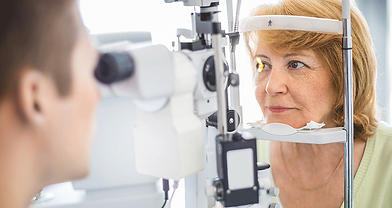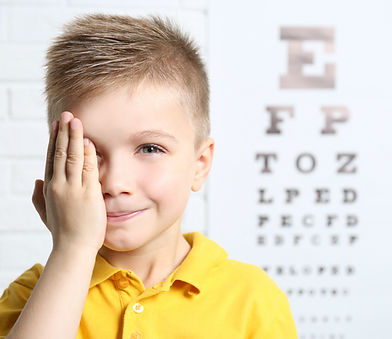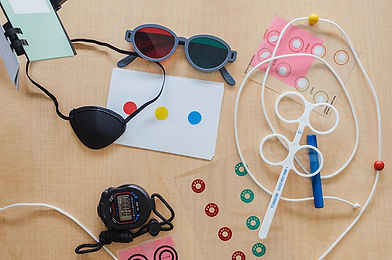
COMMON EYE DISORDERS | EDUCATION CENTER
VISION CARE SERVICES
COMPREHENSIVE EYE EXAMS
A comprehensive eye exam consists of a thorough patient history followed by a battery of tests, beginning with a refraction for a prescription for glasses, a corneal health check, a screening for glaucoma, and a dilated retinal exam to check for various ocular conditions such as cataracts, glaucoma, or macular degeneration.

PEDIATRIC EYE EXAMS
Eye exams for children are structured somewhat differently than those for adults. They include a thorough history of the child’s visual, medical, and educational history, followed by a full comprehensive exam including a retinal dilated exam as well as testing for the following:
-
Excellent visual acuity at all distances
-
Accurate and comfortable eye teaming skills
-
Accurate eye movement skills
-
Accurate and comfortable focusing skills

VISION THERAPY
Optometric Vision Therapy is a series or sequence of developmental vision procedures designed to help patients develop the necessary visual skills to function in life.
Vision therapy aids to improve eye teaming, eye movement and tracking skills, to assure the two eyes are working together correctly, and that the individual is processing visual information at an age appropriate level.
In-office optometric vision therapy is conducted under the supervision of an Optometrist and supported by ongoing, evidence-based scientific research. Each session is approximately 30-45 minutes weekly and is customized for each patient. The number of sessions depends on the patient’s diagnosis and individual needs.
Vision Therapy is for children and adults! While visual acuity (the "20/20" part of vision) requires glasses or contact lenses to improve, visual skills such as tracking, focusing, and teaming must be learned during development. These skills can also be improved later in life at any age due to neuroplasticity, the ability of the brain to form new neuronal connections from learned activities.
Neuroplasticity is largely developed in the earlier years of life. However, certain methods and techniques can be used to change neuroplasticity at any point in life. Vision Therapy, and other similar types of treatment methods, actually change the gray matter volume within the brain. As a result, Vision Therapy exercises can change both function and brain structure to overcome vision problems.

MYOPIA CONTROL
Myopia, or nearsightedness, occurs with a structural change of elongation of the eye ball. This condition was previously treated with single vision glasses or contact lenses. However, in recent years, and with a multitude of studies, practitioners are now utilizing a number of treatments to slow down the progression of myopia in children and young adults due to long term risk factors for developing pathology such as macular degeneration, retinal detachments, and glaucoma.
It is now the practitioner’s clinical goal, aside from striving to provide the best vision, to minimize changes in the prescription and to prevent elongation of the eye ball.
There is no shortage of theories on the mechanisms of myopia development and progression. Genetics, near work, time indoors, poor focusing (lack of accommodation); all these factors have been investigated as potential causes of/correlates to myopia.
The treatments include multifocal glasses and contacts, corneal reshaping, and pharmacological intervention with Atropine. The treatments are based on the patient’s prescription, age, and other factors, which are taken into consideration by the Doctor of Optometry.

CONTACT LENS EVALUATION
A contact lens evaluation consists of special testing in addition to a comprehensive eye exam for existing and new contact lens wearers. The first test will measure the eye surface to determine what size and type of contacts are best for the patient. There will also be a tear film evaluation to ensure proper tear function prior to selecting an appropriate lens. Ocular surface conditions such as dry eye, blepharitis, or cornea irregularities are taken into account during the lens selection process.
An eyeglass prescription is no substitute for a contact lens exam because the two can be different. An eyeglass prescription measures for lenses that are positioned approximately 12 millimeters from the eyes; whereas a contact lens prescription measures for lenses that sit directly on the surface the eye. An improper fitting or prescription of contacts can damage the health of the eyes.
Once the correct fit and prescription for contacts have been determined, there will be a trial lens fitting, followed by a follow up exam to ensure comfortable, all day wear in the new lenses for new contact lens wearers or for those patients trying a different contact lens modality.

